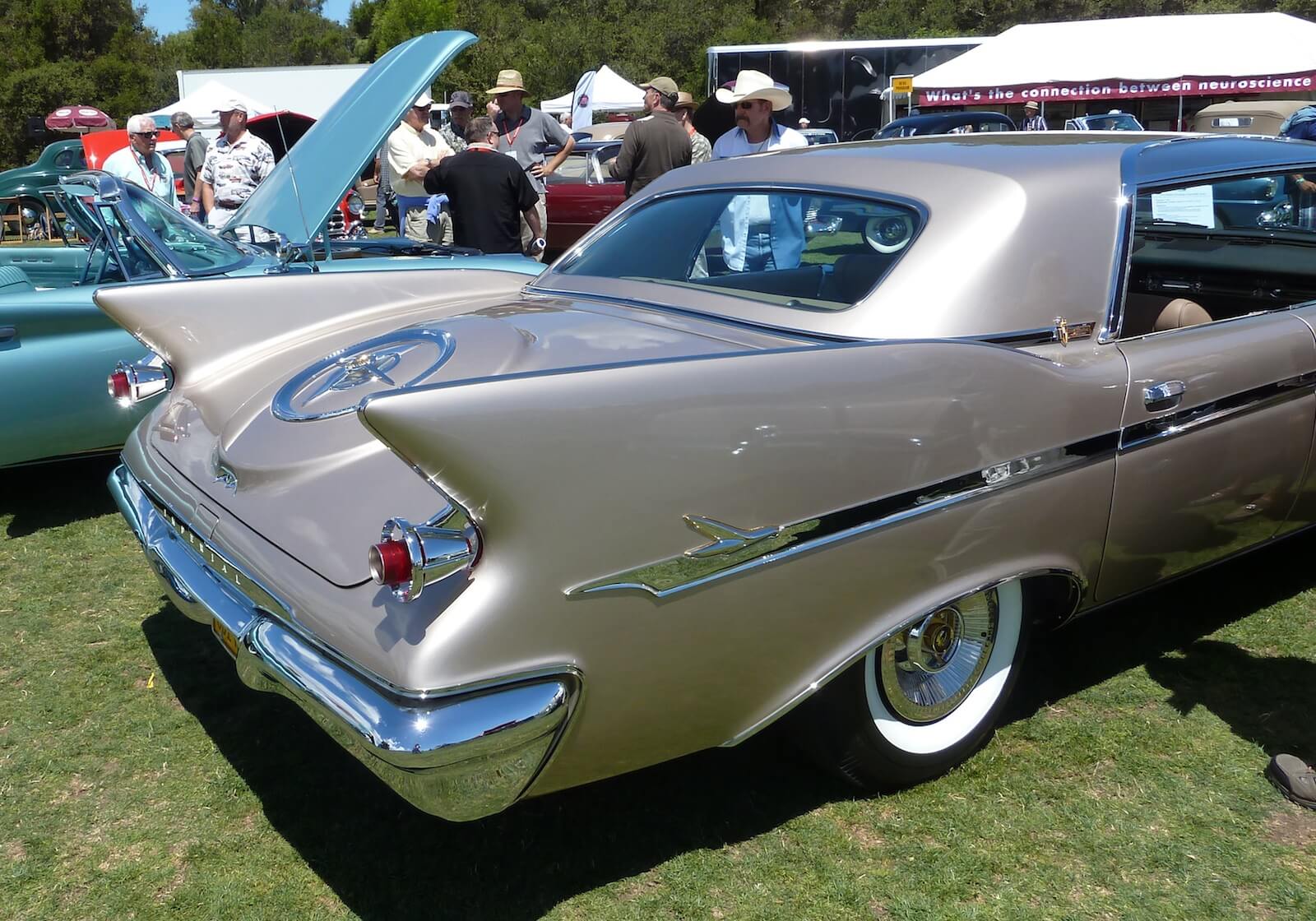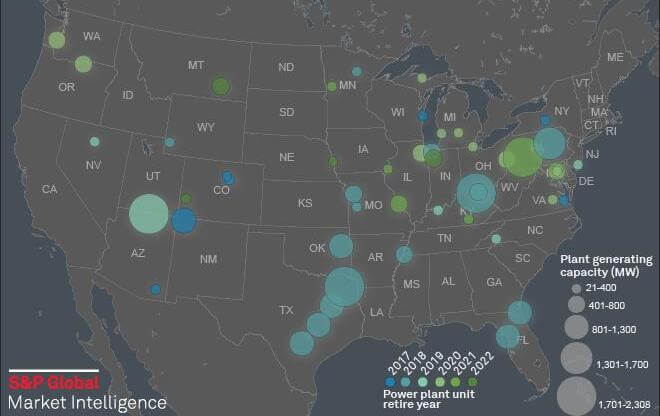Coal Plant Retirements

It’s funny to hear people arguing about the prognosis of the coal industry, especially in the context of the immediately observable event: it’s going away right in front of our faces. It’s like standing in the pouring rain and arguing that the sun is shining. We’re not talking about a prediction; it’s a fact.
Of course, I can’t prove the trend will continue, or even that coal won’t come back. We could have fax machines and white televisions again too, or huge fins on the back of our cars.
But there is a reason that coal plants are down for the count, and it’s much more powerful than the basis on which to bet against the return of car fins: economics.
Sure, we could have a price on carbon, i.e., laws that force polluters to pay the cost of the damage they’re creating. Even in the absence of such a thing, we’re still just a short 8-light-minute, 93-million-mile jaunt from the nearest star, and that bit of the cosmos is still showering us with 6000 times more power than we need. We’ve finally developed cost-effective technology to harvest that tiny fraction to get it to do our bidding.
There’s no reason not to do this, and once the transition is complete, there will no reason to go back to poisoning ourselves.
Feast your eyes:


Craig,
In the meantime back in the real universe the rest of us occupy, the severe crisis affecting US coal fired power generation has nothing to do with ” harvesting the power of the Sun or Wind”.
US coal generation has been in decline for four main reasons.
1) The Obama administration actively discouraged investment in coal and coal fired generation plants at a time when the aging coal generation fleet needed upgrading or replacement. For eight years the US administration conducted a policy to destroy the US coal industry and US coal fired generation.
A recent FERC’s decision to not assist the coal industry and reject suggestions by the Dept of Energy to assist Coal while FERC conducts a review of grid resiliency, further damaged investor confidence.
2) Coal, like Nuclear, has been the target of a lengthy political and public relations crusade from a combination of Environmentalists, green politicians, leftist opportunists, media, renewable power lobbyists, natural gas lobbyists and politicians.
Inevitably, this affected the industries ability to attract the sort of investment required to introduce newer, more efficient ‘clean(er) coal technology. The industry lost momentum and is largely operated by owners seeking to eak out the last profits to be obtained from aging plants with no incentive to invest in new technology.
3) Competition from Natural Gas. With the emergence of abundant and cheap US Natural Gas made possible by the expansion of fracking technology, investment in modernizing coal fired plants went into steep decline.
NG power plants are cheaper to build and have less operating problems than coal. Investment in NG power plants offers better return on invested capital.
4) Competition from coal exports. The Trump administration has successfully encouraged a massive increase in exporting US coal to overseas markets.
For the Coal mining industry this has proved a real life saver. Coal exports are profitable and have brought life back into coal mining communities who don’t really care how the coal the mine is used. For the US economy, the resurgence of the coal industry has brought investment back into coal mining, produced valuable export earnings, while providing a strategic hedge against Russian expansion in Eastern Europe.
Unfortunately for operators of US coal generation plants, with a revival of coal mining the administration achieved it’s immediate political goals. The question of replacing aging coal fired power plants is very difficult without providing direct subsidies or rigging the market place in the same way as the Obama administration did for renewables.
Given the above factors the Trump administration has little incentive to assist Coal plant operators, since the economic activity created by switching to NG still benefits the economy. (Robert Murray doesn’t have that much influence).
Internationally, coal fired generation is increasing, especially with new highly efficient deploying a wide range of advanced technologies. Most of these plants will be built in developing nations where natural gas is neither abundant nor cheap.
The environmental danger of encouraging export is obvious. Most rapidly developing nations do not regard investment in clean technology a priority. Global coal fired power generation will continue, but not necessarily with the sort of investment in clean coal technology normally associated with first world economies.
By not investing in clean(er) coal technology, and committing the future of the US economy to natural gas will not assist reducing carbon emissions in the long term. In fact, it may increase global emissions.
Pretending Wind and Solar technology will replace base load power is simply a fantasy. Worse, it’s a dangerous fantasy, since it deflects investment and public commitment from investing in clean coal technology and advanced nuclear.
The US will pay a price as it watches other, more vibrant, more realistic, nations surpass the US in the quest for cheaper and cleaner energy. As Germany is painfully discovering, there’s no ‘magic silver bullet’ when it comes to clean energy production. Re-commissioning old coal plants when renewable fail comes at a heavy cost, not just to the economy, but also the environment.
Craig,
I recently came one of my favourite authors, P.J. O’Rourke, writing an article about the New York Times, entitled “The Parallel Universe of the New York Times”.
[www.weeklystandard.com/pj-orourke/the-parallel-nyt-universe-where-hillary-is-president-and-yet-everything-is-still-terrible]
I think you might enjoy his writing….:)
He’s a **fabulous** mind, which I realized in college (1970s) when I used to read the National Lampoon.
I can see why you admire him. He’s got that “caring about others is for sissies” thing going on, and in an **extremely** articulate manner.
Craig,
It’s disappointing you think I admire P.J. O’Rourke because I admire “caring about others is for sissies”.
Equally sad is an attitude by leftists that only they “care” about ” others “. Of course, by “others”, what they really mean is caring for those who share their opinions, and only then with other peoples money !
True caring is respecting others right to make mistakes, pay the price and learn. It’s about accepting that all people are not created equal, but should be provided equal opportunity to succeed. It accepting adversity can be an advantage.
Caring about others is about responsibility, not ineffective moralistic bleating, but hard work, investment and example. (investment isn’t just money, it’s time,commitment, compassion, understanding and action).
My late wife was a shinning example of tremendous passion and desire to help all kinds of social causes. Her love of humanity and the environment was boundless. We were fortunate to bring into this world a daughter who has combined her mother’s compassion with my practical pragmatism.
” Caring about others” only means something, if you can list the practical, tangible, positive outcomes of how your “caring” has made a difference.